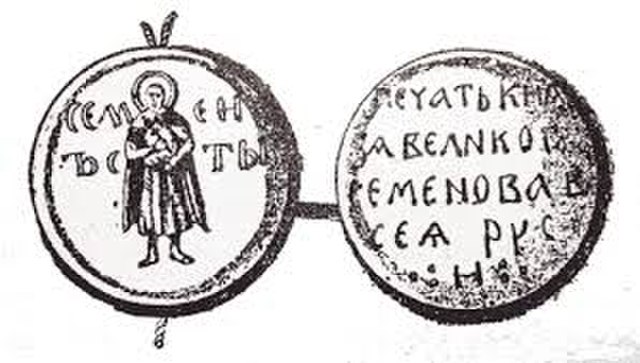Monomakh's Cap, also called the Golden Cap, is a chief relic of the Muscovite Grand Princes and Russian Tsars. It is a symbol-crown of the Russian autocracy, and is the oldest of the crowns currently exhibited at the Imperial treasury section of the Kremlin Armoury. Monomakh's Cap is an early 14th-century gold filigree skullcap composed of eight sectors, elaborately ornamented with a scrolled gold overlay, inlaid with precious stones and pearls, and trimmed with sable. The cap is surmounted by a simple gold cross with pearls at each of the extremities.
Monomakh's Cap in the foreground and Kazan Cap in the background
Russian regalia used prior to the Great Imperial Crown. The crown is styled after the Monomakh Cap, and was made for Tsar Michael Fyodorovich by Kremlin masters in 1627. The orb and sceptre are of Western-European origin[citation needed] and may have been given to Tsar Boris Godunov in 1604.
The Principality of Moscow or Grand Duchy of Moscow, also known simply as Muscovy, was a principality of the Late Middle Ages centered on Moscow. It eventually evolved into the Tsardom of Russia in the early modern period. The princes of Moscow were descendants of the first prince Daniel, referred to in modern historiography as the Daniilovichi, a branch of the Rurikids.
The seal of Simeon the Proud (1340s), reads: "The seal of the Grand Duke Simeon of all Rus'".
The Moscow Kremlin under Prince Ivan Kalita in the early 14th century, depicted by 19th century painter Apollinary Vasnetsov.
Dmitry Donskoi in the 1380 Battle of Kulikovo, painting by Adolphe Yvon, 1849
Andrei Rublev's famous icon of the Trinity






